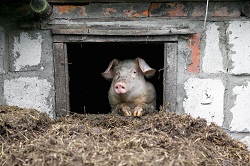Valuable products from waste
Europe produces around 140 million tonnes of biowaste per year, or about 300 kg per person, much of which ends up in landfill. Current processing of so-called wet biomass is inefficient, especially since the waste could be used as a raw material for high-value carbon products. The EU-funded project NEWAPP(opens in new window) (New technological applications for wet biomass waste stream products) developed new, efficient and environmentally sound ways of processing wet biomass. The processes involve HTC. Work began with an assessment of current technological barriers and the various products obtainable through the HTC process. Researchers selected and characterised the biomass waste streams to be processed. Then, they assessed the potential for each. The assessment determined the marketable products derived from HTC, for which the team assessed market potential. After selection of the waste streams, HTC processing began in Spain. First, the group tested new HTC waste reuse technologies. Hence, they identified several feasible uses for HTC coal. Next, researchers determined quality standards for the reuse of wet biomass. The team also assessed various wet biomass parameters necessary for industrial use, such as water content and calorific value. Investigators submitted a new standard to the International Organization for Standardization (ISO) for consideration. The third outcome was a decision tool for implementation of wet biomass reuse technologies. The tool enabled users to determine which waste streams can be best treated with HTC and which products are most suitable for market. Lastly, NEWAPP investigated carbon products and the processes used to create them, followed by a cost-benefit analysis. The project's developments will increase the competitiveness of HTC processes. Wet biomass waste will be transformed into useful products, with great benefits for industry.




